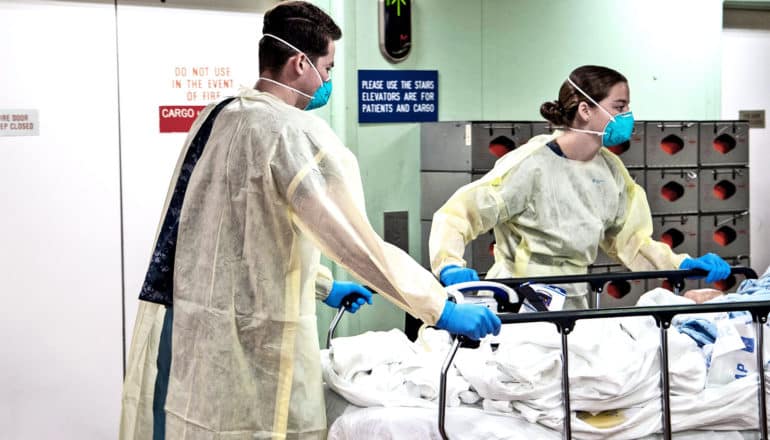
A new framework can help hospitals ethically allocate scarce critical care resources like ventilators and ICU beds during the COVID-19 pandemic, researchers report.
As COVID-19 spreads in the United States, some physicians and hospitals are confronting a difficult and unprecedented situation—the need to choose which patients should receive the limited supply of critical care resources when not all patients can.
Hundreds of hospitals nationwide have adopted the guidelines, described in the Journal of the American Medical Association, or are in the process of doing so, researchers say.
The designers have made the model hospital policy freely available and health care organizations can easily adapt it for their specific needs.
“In a pandemic like this, public health policy focuses on doing the greatest good for as many people as possible. This dramatically changes how hospitals must prioritize critical care resources,” says Douglas White, professor in the critical care medicine department at the University of Pittsburgh School of Medicine and director of the department’s Program on Ethics and Decision Making in Critical Illness.
“Our policy offers health care organizations a new guideline that has been developed with the input of community members, ethicists, and physicians, and ensures all patients are eligible for critical care if they need it,” says White, who developed the new policy and cowrote the paper.
COVID-19 ethics
Researchers began the process of developing a new framework in 2008 and subsequently worked with collaborators at Johns Hopkins University to gain the input of diverse community groups, ethicists, and disaster medicine experts.
The American College of Chest Physicians published guidelines for allocating ventilators and intensive care unit beds during a public health emergency in 2014, but they contained ethically problematic provisions like excluding certain groups of people by default, like those with chronic heart failure and the very elderly. White says.
The new guidelines differ from existing professional society recommendations in two ways:
- They do not exclude any individual or groups from eligibility for critical care.
- They prioritize patients most likely to receive benefit from ventilator support, both in terms of the likelihood of surviving the hospitalization and longer-term survival. This approach is similar to rules for allocating lungs for transplantation, which incorporate patients’ likelihood of long-term survival after transplantation.
The allocation framework uses a tool that integrates multiple criteria to arrive at a score from one to eight, where lower scores indicate those who are more likely to benefit from critical care.
“The real goal is to make sure that we never need to make these decisions in the first place.“
“No single measure adequately captures all the values we want to take into account when making such decisions, so we need to incorporate multiple criteria as we determine how to achieve the greatest benefit to the greatest number of patients,” White says.
‘A living document’
The policy also recommends that a triage committee, not the treating physician, make decisions about allocating ventilators and ICU resources. It explicitly prohibits the allocation of ventilators on the basis of gender, race, religion, intellectual disability, insurance status, wealth, citizenship, social status, or social connections.
“These recommendations ensure that we don’t put physicians who are in the middle of caring for patients in a position where they have to make morally difficult decisions about which of their patients should receive care,” White says.
Researchers designed the policy to be adapted quickly as new information becomes available, for example if new clinical findings that help physicians identify patients unlikely to survive. “This is designed to be a living document,” says White.
Another advantage of the approach of not excluding any patients from eligibility for ICU care is that an increase in the availability of ventilators—as could be expected as manufacturers ramp up capacity—allows more patients to benefit overall.
“Although it’s critically important that hospitals have an ethical framework to make these tragic choices, the real goal is to make sure that we never need to make these decisions in the first place,” White says.
“The only way to do that is by social distancing and other measures to decrease the volume of cases over a short period of time. There is no magic factory that will instantly produce more ventilators, and we should do everything in our power to slow the spread of this epidemic.”
Additional coauthors are from the University of California, San Francisco. The National Institutes of Health supported the work.
Source: University of Pittsburgh
The post COVID-19 ethics: Who gets a ventilator? appeared first on Futurity.
from Futurity https://ift.tt/2UteNXl
No comments:
Post a Comment